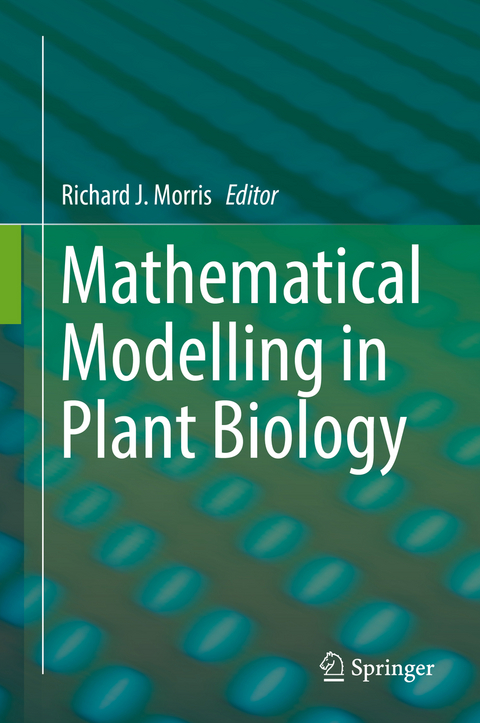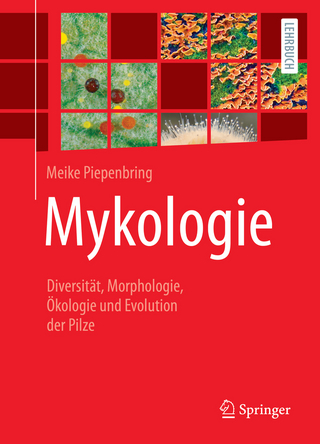
Mathematical Modelling in Plant Biology
Springer International Publishing (Verlag)
978-3-319-99069-9 (ISBN)
Richard J Morris' research aims to shed light on the physics of information processing in plants. He completed a degree in Mechanical Engineering at the age of 19 before obtaining a BSc in Physics and then an MSc in Theoretical Physics in 1996 from the Erzherzog University of Graz, Austria. He won an EMBL fellowship to carry out his PhD research at the European Molecular Biology Laboratory (EMBL) in the field of computational protein crystallography with Dr Victor Lamzin. After completing his PhD in 2000, Richard joined the group of Dr Gerard Bricogne (MRC-LMB Cambridge & Global Phasing Ltd) to work on Bayesian approaches for protein structure solution. Richard then joined the group of Dame Prof Janet Thornton, FRS, at the European Bioinformatics Institute (EMBL-EBI) in 2002, where he developed novel shape mathematics for protein function prediction. In 2005, Richard was recruited to the bioinformatics group at the John Innes Centre (JIC) as a tenure-track project leader. Richard played a key role in building up computational biology at JIC. He became Head of Department for Computational and Systems Biology in 2010. In 2013 he took on the role of institute strategic programme leader as an associate director. He is active in promoting quantitative, and in particular physical, approaches to plant biology and in training the next generation in mathematical modelling and computational methods.
Physical Models of Plant Morphogenesis.- Fluid Transport in Plants.- Modelling Ion Channels.- Modelling the Plant Microtubule Cytoskeleton.- Bridging Scales from Protein Function to Whole-plant Water Relations with the OnGuard Platform.- Single-cell Approaches for Understanding Morphogenesis Using Computational Morphodynamics.- Modeling Plant Tissue Growth and Cell Division.- Modeling Plant Development with L-systems.- Flowering Time as a Model Trait to Bridge Proximate and Evolutionary Questions.- All but Sleeping? Consequences of Soil Seed Banks on Neutral and Selective Diversity in Plant Species.
"This book is an interesting collection of ten types of mathematical and computational methods used for modelling processes occurring in plants. ... the book is written for an audience with a solid background in either mathematical/ computational methods or plant biology the structure of the chapters and the usage of numerous case studies complemented with an extensive set of references recommend this book is a good starting point for undergraduate, graduates and established researchers with an interest in this field." (Irina Ioana Mohorianu, zbMATH 1415.92008, 2019)
“This book is an interesting collection of ten types of mathematical and computational methods used for modelling processes occurring in plants. … the book is written for an audience with a solid background in either mathematical/ computational methods or plant biology the structure of the chapters and the usage of numerous case studies complemented with an extensive set of references recommend this book is a good starting point for undergraduate, graduates and established researchers with an interest in this field.” (Irina Ioana Mohorianu, zbMATH 1415.92008, 2019)
| Erscheinungsdatum | 15.11.2018 |
|---|---|
| Zusatzinfo | XIII, 219 p. 95 illus., 74 illus. in color. |
| Verlagsort | Cham |
| Sprache | englisch |
| Maße | 155 x 235 mm |
| Gewicht | 520 g |
| Themenwelt | Naturwissenschaften ► Biologie ► Botanik |
| Schlagworte | Agriculture • Arabidopsis • Computational Biology • Mathematical Biology • Plant Physiology • Plant systems biology • systems biology |
| ISBN-10 | 3-319-99069-1 / 3319990691 |
| ISBN-13 | 978-3-319-99069-9 / 9783319990699 |
| Zustand | Neuware |
| Informationen gemäß Produktsicherheitsverordnung (GPSR) | |
| Haben Sie eine Frage zum Produkt? |
aus dem Bereich


